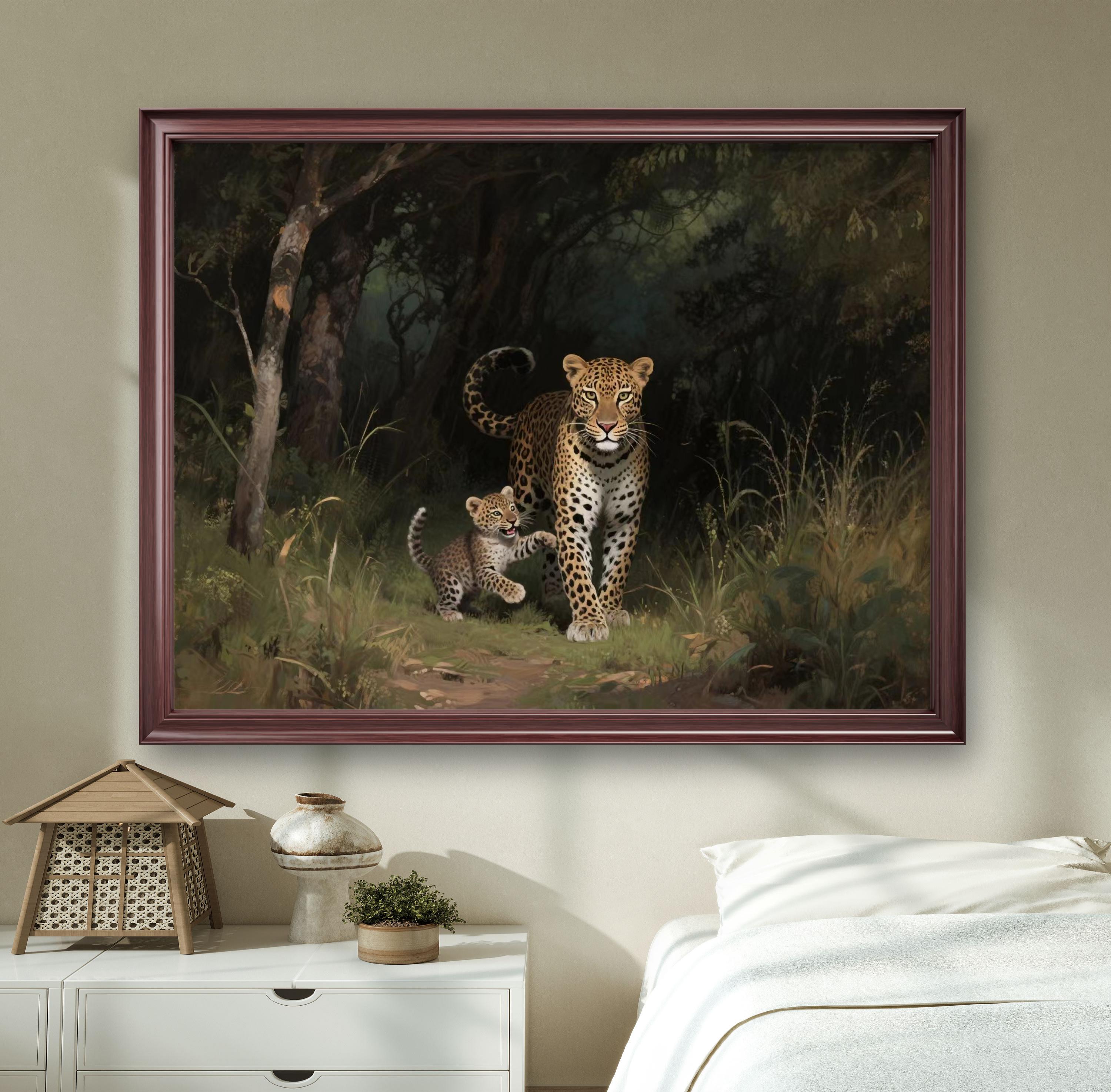Wildlife oil paintings have long held a special place in the art world, bridging the gap between human creativity and the untamed beauty of the natural world. These artworks not only serve as decorative pieces but also carry profound meanings, making them a beloved choice for art collectors, nature enthusiasts, and interior designers alike.
Why Wildlife Oil Paintings Endure in Popularity
The enduring appeal of wildlife oil paintings stems from multiple factors that resonate with people across different ages and backgrounds.
- Connection to Nature: In an increasingly urbanized world, wildlife oil paintings offer a window to the wild. They allow viewers to escape the hustle of city life and immerse themselves in scenes of forests, savannas, and oceans, featuring animals in their natural habitats. A painting of a majestic lion on the African plain or a graceful deer in a winter wood can evoke a sense of calm and wonder.
- Emotional Resonance: Animals often symbolize traits like strength, freedom, and innocence. A wildlife oil painting can tap into these emotions—for example, a mother bear with her cubs may stir feelings of warmth and protection, while a soaring eagle can represent ambition and freedom.
- Artistic Craftsmanship: Oil painting, with its rich textures and ability to blend colors seamlessly, is ideal for capturing the details of wildlife. From the soft fur of a fox to the intricate feathers of a peacock, artists use layers of oil paint to create depth and realism that other mediums struggle to match. This level of craftsmanship makes each wildlife oil painting a unique work of art.

Choosing the Right Wildlife Oil Painting for Your Space
Selecting a wildlife oil painting requires considering both personal preference and the aesthetic of your space.
1. Define Your Style: Wildlife oil paintings come in various styles, from realistic to impressionistic. Realistic pieces focus on precise details, making the animal look as if it could step out of the canvas. Impressionistic works, on the other hand, use loose brushstrokes and vibrant colors to capture the mood of the scene rather than exact details. Decide which style aligns with your home decor—realistic paintings fit well in classic or traditional spaces, while impressionistic ones complement modern or bohemian interiors.
2. Consider the Subject Matter: Think about the animals that resonate with you. Do you prefer the grandeur of big cats, the elegance of birds, or the charm of woodland creatures? Also, consider the setting—coastal scenes with seals or dolphins work well in beach houses, while forest animals like wolves or owls add a cozy touch to living rooms.
3. Size and Placement: The size of the painting should match the wall space. A large, statement piece can be the focal point of a living room, while smaller paintings can be grouped in a hallway or bedroom. Ensure there’s enough wall space around the painting to avoid overcrowding, and hang it at eye level for the best viewing experience.
Caring for Your Wildlife Oil Painting
Proper care ensures that your wildlife oil painting retains its beauty for years to come.
- Avoid Direct Sunlight: UV rays can fade the colors of oil paintings over time. Hang your painting in a spot where it won’t be exposed to direct sunlight for extended periods. If sunlight is unavoidable, use UV-filtering window films.
- Control Humidity and Temperature: Extreme changes in humidity and temperature can cause the canvas to expand or contract, leading to cracks in the paint. Keep the painting in a room with stable humidity (between 40% and 60%) and a temperature between 65°F and 75°F (18°C and 24°C).
- Dust Regularly: Use a soft, dry brush or a microfiber cloth to gently dust the surface of the painting. Avoid using water or cleaning products, as they can damage the oil paint.
Wildlife oil paintings are more than just art—they are a celebration of nature’s diversity and a testament to the skill of artists. Whether you’re a seasoned collector or a first-time buyer, these paintings have the power to transform a space and bring the beauty of the wild into your home.



